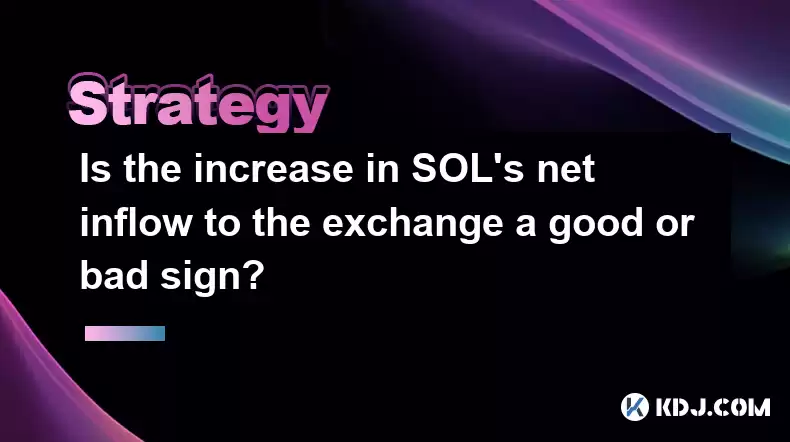-
 Bitcoin
Bitcoin $114500
-0.31% -
 Ethereum
Ethereum $3648
1.11% -
 XRP
XRP $3.033
-0.27% -
 Tether USDt
Tether USDt $0.9999
-0.01% -
 BNB
BNB $758.5
-0.32% -
 Solana
Solana $167.5
1.48% -
 USDC
USDC $0.9998
-0.02% -
 TRON
TRON $0.3331
0.74% -
 Dogecoin
Dogecoin $0.2039
0.25% -
 Cardano
Cardano $0.7419
-0.46% -
 Hyperliquid
Hyperliquid $39.21
2.66% -
 Stellar
Stellar $0.4049
-1.95% -
 Sui
Sui $3.483
-0.56% -
 Bitcoin Cash
Bitcoin Cash $570.8
2.89% -
 Chainlink
Chainlink $16.67
-0.57% -
 Hedera
Hedera $0.2470
-1.57% -
 Ethena USDe
Ethena USDe $1.001
0.00% -
 Avalanche
Avalanche $22.36
1.52% -
 Litecoin
Litecoin $123.4
4.35% -
 UNUS SED LEO
UNUS SED LEO $8.989
0.09% -
 Toncoin
Toncoin $3.324
-2.40% -
 Shiba Inu
Shiba Inu $0.00001219
-1.30% -
 Uniswap
Uniswap $9.811
2.54% -
 Polkadot
Polkadot $3.662
-0.07% -
 Monero
Monero $295.5
-3.85% -
 Dai
Dai $1.000
0.01% -
 Bitget Token
Bitget Token $4.345
0.24% -
 Cronos
Cronos $0.1380
0.95% -
 Pepe
Pepe $0.00001044
-1.14% -
 Ethena
Ethena $0.5981
-4.24%
Is the increase in SOL's net inflow to the exchange a good or bad sign?
Increased SOL net inflow to exchanges can signal trading activity, liquidity needs, or profit-taking, impacting its price based on market sentiment and events.
Apr 21, 2025 at 03:00 pm

The increase in SOL's net inflow to the exchange is a topic that generates significant interest among cryptocurrency enthusiasts and investors. Understanding whether this phenomenon is a good or bad sign requires a deep dive into several aspects of cryptocurrency market dynamics, particularly focusing on Solana (SOL). In this article, we will explore the implications of increased net inflows to exchanges, the factors that contribute to this trend, and what it might mean for SOL's price and overall market sentiment.
What Does Net Inflow to the Exchange Mean?
Net inflow to the exchange refers to the difference between the amount of cryptocurrency being deposited into exchanges and the amount being withdrawn. A positive net inflow indicates that more SOL is being moved into exchanges than is being taken out. This can have various implications for the market, and understanding these can help investors make more informed decisions.
Factors Contributing to Increased Net Inflow
Several factors can contribute to an increase in SOL's net inflow to the exchange. These include:
Trading Activity: When investors anticipate significant price movements, they may deposit more SOL into exchanges to prepare for trading. This is often seen around major announcements or market events.
Liquidity Needs: Traders and investors might move SOL to exchanges to increase liquidity, which can be crucial for executing large trades without significantly impacting the market price.
Profit-Taking: After a period of price appreciation, holders might transfer their SOL to exchanges to sell and realize profits.
Market Sentiment: Negative sentiment or fear of a downturn can lead to increased deposits as investors seek to sell their holdings before a potential drop in price.
Implications of Increased Net Inflow
The implications of increased net inflow to the exchange can be interpreted in several ways, depending on the context and other market indicators. Here are some potential scenarios:
Bearish Signal: A significant increase in net inflow might be seen as a bearish signal, indicating that more investors are looking to sell their SOL. This can lead to increased selling pressure and potentially lower prices.
Bullish Signal: Conversely, if the increased net inflow is driven by traders positioning themselves for anticipated positive news or developments, it could be interpreted as a bullish signal. This might lead to increased buying pressure and potentially higher prices.
Neutral Indicator: In some cases, increased net inflow might simply reflect higher trading volumes without a clear directional bias. This can be seen as a neutral indicator, where the market is in a state of flux.
Analyzing SOL's Specific Case
To better understand the implications for SOL, it's important to look at the specific context surrounding the increase in net inflow. Factors such as recent price movements, upcoming events, and overall market sentiment should be considered. For instance:
Recent Price Movements: If SOL has experienced a significant price increase, the increased net inflow might be driven by profit-taking. Conversely, if the price has been stable or declining, it might indicate a more bearish outlook.
Upcoming Events: If there are significant upcoming events, such as network upgrades or partnerships, the increased net inflow might reflect traders positioning themselves to capitalize on potential positive developments.
Market Sentiment: Analyzing sentiment indicators, such as social media buzz and news sentiment, can provide additional context. If the sentiment is generally positive, the increased net inflow might be seen as a sign of confidence in SOL's future.
How to Monitor Net Inflow
Monitoring SOL's net inflow to the exchange can be done through various tools and platforms. Here's how you can keep track of this metric:
Use Crypto Analytics Platforms: Platforms like Glassnode and CryptoQuant provide detailed data on net inflows and outflows for various cryptocurrencies, including SOL. These platforms often offer real-time data and historical charts.
Follow Market Reports: Many cryptocurrency news outlets and market analysis services publish regular reports on net inflows and outflows. Subscribing to these can keep you updated on the latest trends.
Set Up Alerts: Some platforms allow you to set up custom alerts for specific metrics, such as net inflows. This can help you stay informed without constantly monitoring the data.
Analyze Exchange Data: Some exchanges provide data on deposits and withdrawals, which can be used to calculate net inflows. Comparing data from multiple exchanges can give a more comprehensive picture.
What Can Investors Do?
Given the potential implications of increased net inflow to the exchange, investors can take several steps to navigate the market effectively:
Stay Informed: Keeping up with the latest news and market developments can help you understand the context behind the increased net inflow.
Diversify: Diversifying your cryptocurrency portfolio can help mitigate risks associated with price fluctuations in SOL.
Set Clear Trading Strategies: Whether you're looking to buy, sell, or hold SOL, having a clear trading strategy can help you make more informed decisions based on net inflow data.
Use Stop-Loss Orders: Setting stop-loss orders can help protect your investments from significant price drops, especially if the increased net inflow is seen as a bearish signal.
Frequently Asked Questions
Q: Can increased net inflow to the exchange be a leading indicator of price movements?
A: While increased net inflow can provide insights into market sentiment and potential trading activity, it is just one of many indicators. It should be used in conjunction with other metrics, such as trading volume, price trends, and market sentiment, to make more accurate predictions about price movements.
Q: How does the increased net inflow affect the overall liquidity of SOL?
A: Increased net inflow can enhance the liquidity of SOL on exchanges, as more tokens are available for trading. This can lead to tighter bid-ask spreads and more efficient price discovery. However, if the increased inflow is driven by selling pressure, it might also lead to increased volatility.
Q: Are there any specific tools or platforms that provide real-time data on SOL's net inflow?
A: Yes, several platforms offer real-time data on SOL's net inflow. Glassnode, CryptoQuant, and Nansen are popular choices among crypto analysts for tracking such metrics. These platforms provide detailed charts and historical data, which can be invaluable for making informed trading decisions.
Q: How can retail investors use net inflow data to their advantage?
A: Retail investors can use net inflow data to gauge market sentiment and potential price movements. By monitoring net inflows, they can identify trends and adjust their trading strategies accordingly. For instance, if there's a sudden increase in net inflow accompanied by positive market sentiment, it might be a good time to buy. Conversely, if the increased inflow is driven by fear and profit-taking, it might be wise to consider selling or holding off on new investments.
Disclaimer:info@kdj.com
The information provided is not trading advice. kdj.com does not assume any responsibility for any investments made based on the information provided in this article. Cryptocurrencies are highly volatile and it is highly recommended that you invest with caution after thorough research!
If you believe that the content used on this website infringes your copyright, please contact us immediately (info@kdj.com) and we will delete it promptly.
- Metamask, Altcoins, and the Move: Is Cold Wallet the Future?
- 2025-08-06 04:30:12
- BlockDAG, BNB, and SEI: What's Hot and What's Not in the Crypto World
- 2025-08-06 04:50:13
- Cryptos Under $1 Primed for a Bull Run: Which Will Explode?
- 2025-08-06 05:30:12
- Coinbase (COIN) Stock Trading Lower: Navigating the Crypto Equity Reset
- 2025-08-06 04:35:13
- Meme Coins Skyrocket: Is Dogecoin About to Be Dethroned?
- 2025-08-06 03:50:13
- Tether's On-Chain Surge: USDT Dominates and Drives Blockchain Fees
- 2025-08-06 02:50:13
Related knowledge

How to avoid common crypto investment mistakes?
Jul 13,2025 at 01:35am
Understanding the Risks of Crypto InvestmentInvesting in cryptocurrency can be highly rewarding, but it also comes with significant risks. One of the ...

What is a long-short crypto strategy?
Jul 15,2025 at 10:56am
Understanding the Basics of a Long-Short Crypto StrategyA long-short crypto strategy is an investment approach where traders simultaneously take long ...

What is a long-short crypto strategy?
Jul 11,2025 at 01:28pm
Understanding the Basics of Long-Short Crypto StrategyA long-short crypto strategy is an investment approach where traders take both long and short po...

How to use the RSI indicator for crypto?
Jul 12,2025 at 03:56pm
Understanding the RSI Indicator in Cryptocurrency TradingThe Relative Strength Index (RSI) is a momentum oscillator used to measure the speed and chan...

Is copy trading a good strategy for crypto beginners?
Jul 12,2025 at 08:28am
Understanding Copy Trading in the Cryptocurrency MarketCopy trading is a strategy where novice traders replicate the trades of experienced investors a...

How to build a crypto portfolio with $1000?
Jul 13,2025 at 08:14pm
Understanding the Basics of Cryptocurrency InvestmentBuilding a crypto portfolio with $1000 starts with understanding the fundamentals of cryptocurren...

How to avoid common crypto investment mistakes?
Jul 13,2025 at 01:35am
Understanding the Risks of Crypto InvestmentInvesting in cryptocurrency can be highly rewarding, but it also comes with significant risks. One of the ...

What is a long-short crypto strategy?
Jul 15,2025 at 10:56am
Understanding the Basics of a Long-Short Crypto StrategyA long-short crypto strategy is an investment approach where traders simultaneously take long ...

What is a long-short crypto strategy?
Jul 11,2025 at 01:28pm
Understanding the Basics of Long-Short Crypto StrategyA long-short crypto strategy is an investment approach where traders take both long and short po...

How to use the RSI indicator for crypto?
Jul 12,2025 at 03:56pm
Understanding the RSI Indicator in Cryptocurrency TradingThe Relative Strength Index (RSI) is a momentum oscillator used to measure the speed and chan...

Is copy trading a good strategy for crypto beginners?
Jul 12,2025 at 08:28am
Understanding Copy Trading in the Cryptocurrency MarketCopy trading is a strategy where novice traders replicate the trades of experienced investors a...

How to build a crypto portfolio with $1000?
Jul 13,2025 at 08:14pm
Understanding the Basics of Cryptocurrency InvestmentBuilding a crypto portfolio with $1000 starts with understanding the fundamentals of cryptocurren...
See all articles

























































































